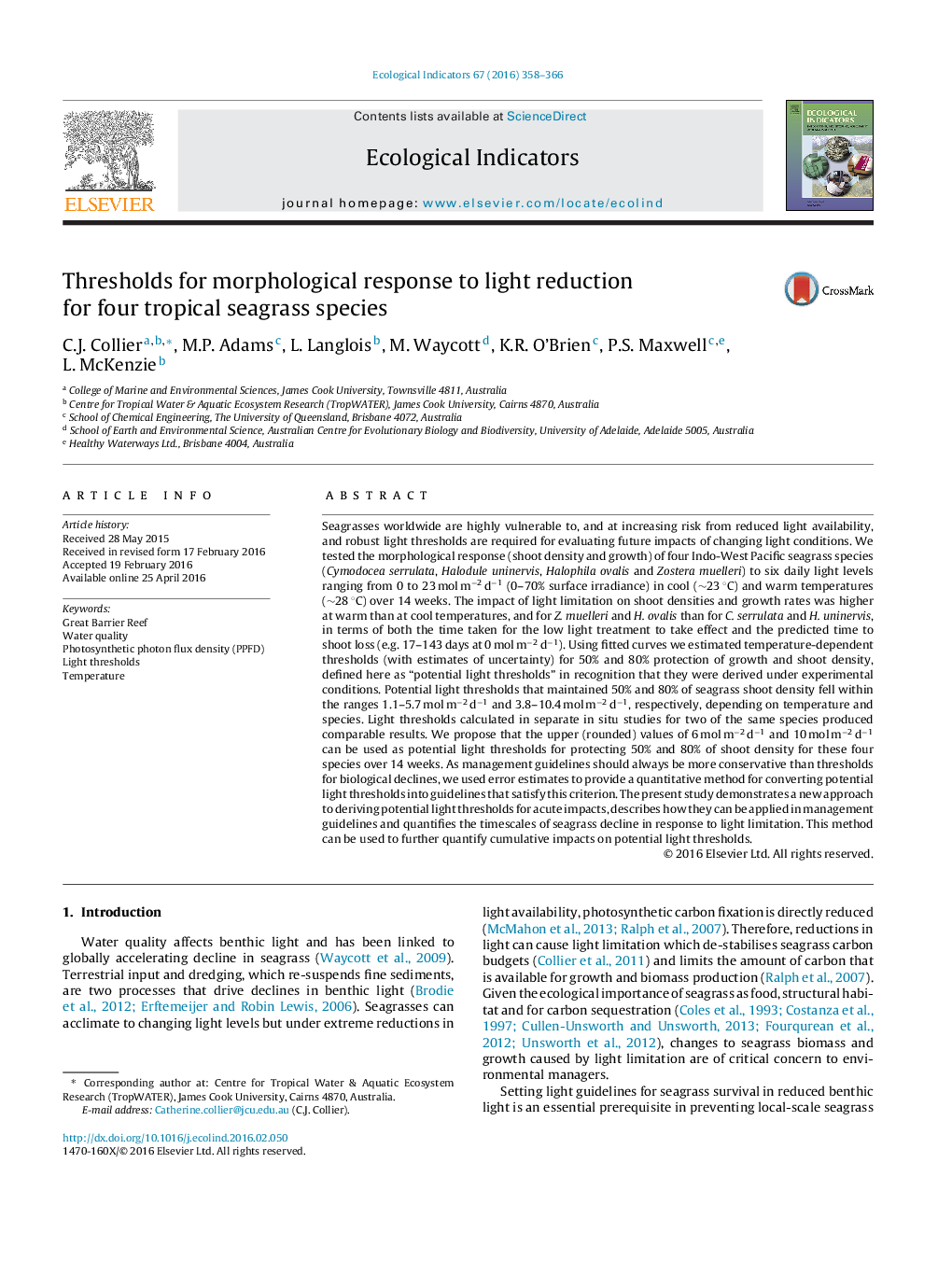| کد مقاله | کد نشریه | سال انتشار | مقاله انگلیسی | نسخه تمام متن |
|---|---|---|---|---|
| 4372883 | 1617135 | 2016 | 9 صفحه PDF | دانلود رایگان |
• We applied a novel approach to derive light thresholds for four seagrass species over 98 d.
• Light limitation caused shoot loss and a reduction in growth rates.
• Fitted curves were used to estimate potential light thresholds (with uncertainty).
• Thresholds that maintain 50% and 80% shoot density and growth rate were calculated.
• Thresholds were 1.1–5.7 mol m−2 d−1 and 3.8–10.4 mol m−2 d−1, depending on temperature and species.
Seagrasses worldwide are highly vulnerable to, and at increasing risk from reduced light availability, and robust light thresholds are required for evaluating future impacts of changing light conditions. We tested the morphological response (shoot density and growth) of four Indo-West Pacific seagrass species (Cymodocea serrulata, Halodule uninervis, Halophila ovalis and Zostera muelleri) to six daily light levels ranging from 0 to 23 mol m−2 d−1 (0–70% surface irradiance) in cool (∼23 °C) and warm temperatures (∼28 °C) over 14 weeks. The impact of light limitation on shoot densities and growth rates was higher at warm than at cool temperatures, and for Z. muelleri and H. ovalis than for C. serrulata and H. uninervis, in terms of both the time taken for the low light treatment to take effect and the predicted time to shoot loss (e.g. 17–143 days at 0 mol m−2 d−1). Using fitted curves we estimated temperature-dependent thresholds (with estimates of uncertainty) for 50% and 80% protection of growth and shoot density, defined here as “potential light thresholds” in recognition that they were derived under experimental conditions. Potential light thresholds that maintained 50% and 80% of seagrass shoot density fell within the ranges 1.1–5.7 mol m−2 d−1 and 3.8–10.4 mol m−2 d−1, respectively, depending on temperature and species. Light thresholds calculated in separate in situ studies for two of the same species produced comparable results. We propose that the upper (rounded) values of 6 mol m−2 d−1 and 10 mol m−2 d−1 can be used as potential light thresholds for protecting 50% and 80% of shoot density for these four species over 14 weeks. As management guidelines should always be more conservative than thresholds for biological declines, we used error estimates to provide a quantitative method for converting potential light thresholds into guidelines that satisfy this criterion. The present study demonstrates a new approach to deriving potential light thresholds for acute impacts, describes how they can be applied in management guidelines and quantifies the timescales of seagrass decline in response to light limitation. This method can be used to further quantify cumulative impacts on potential light thresholds.
Figure optionsDownload as PowerPoint slide
Journal: Ecological Indicators - Volume 67, August 2016, Pages 358–366
